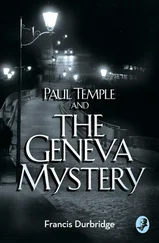‘I’m sorry, I don’t…’ Tom frowned.
‘We met at your grandfather’s funeral. I’m the Duval family…’
‘Attorney, yes,’ Tom suddenly remembered. ‘How did you…?’
‘Your associate was kind enough to suggest that I might find you here,’ Hewson explained.
Tom fixed Archie with a questioning stare.
‘My associate?’
‘He kept bloody calling.’ Archie shrugged. ‘I didn’t think he’d actually show up.’
‘There’s the small matter of your grandfather’s will,’ Hewson continued. ‘As I explained to you when we last met, he specified that I was to pass on to you something that your mother had given him shortly before her death.’
‘Yes, I remember.’
‘This time I’ve brought all the paperwork with me. If you wouldn’t mind just signing here-’ Hewson produced a sheet of paper and a pen and then held up his briefcase so that Tom could lean against it as he signed. ‘Excellent,’ he exclaimed, popping the briefcase’s brass catches and taking out a small wooden box and an envelope that he handed to Tom with a flourish. ‘Then I will be on my way.’
With a nod, he filed away the signed sheet of paper and strode off towards his waiting car, a phone snapping to his cheek.
‘What is it?’ Archie asked in a curious voice.
‘A letter from my mother,’ Tom replied, the sight of his name written in faded black ink strangely familiar from hoarded postcards.
The envelope opened easily, revealing a white card dated to the year before she’d died, across which she’d scribbled a brief message:
Darling Tom
One day, when you’re older, you might want some answers. And if you’re reading this, it probably means I’m not there to give them. So what’s inside this box might help. Whatever you find, don’t think too badly of me. I always loved you. I still do.
Love Mummy
Tom turned away from Archie, his eyes hot and stinging, his throat tightening, and opened the box.
All of a sudden, the events of the past few weeks came flooding back into sharp focus. De Luca’s strange familiarity on meeting him, Faulks’s openmouthed surprise at the mention of his name, Santos’s veiled questions.
Because inside, nestling on a black velvet background, was a watch.
A watch with an ivory face and an orange second hand.
The Nativity with St Francis and St Lawrence (also known as The Adoration ) was painted by the Italian master Michelangelo Merisi da Caravaggio in 1609 during his self-imposed exile from Rome after killing a man in a duel. The six square metre work was stolen from the Oratory of San Lorenzo in Palermo, Sicily on 16th October 1969. Working under the cover of darkness, the thieves cut the work from its frame with razor blades and escaped in a lorry. In 1996, Francesco Marino Mannoia, an informant and former member of the Sicilian mafia, claimed he had stolen the painting as a young man on the orders of a high-ranking mobster. Other sources, however, have pointed the finger at amateurs who acted after seeing a TV programme about the painting the previous week and then sold it on to the local Sicilian mafia when they realised that they couldn’t fence it. At one point it is said to have ended up in the hands of Palermo boss Rosario Riccobono (throttled in 1982 at a barbecue lunch organised for that purpose by the Corleonesi family) before passing on to Gerlando ‘The Rug’ Alberti, commander of the Porta Nuova district in Palermo. Other rumours that the work was damaged in the theft or even destroyed in an earthquake in 1980 have also circulated from time to time, as have stories of supposed sightings abroad. Today, however, the Nativity remains one of the most famous unrecovered stolen paintings in the world. It is listed by the FBI as one of its top ten art crimes and they have estimated its value at $20 million, although the likely auction value is far, far greater.
Tomb-robbing has often been called the second oldest profession. Italy, with over forty UNESCO World Heritage sites, is a particular target, but it is a plague that increasingly affects other countries such as Peru, Guatemala, Mexico, China, Thailand, Turkey, Egypt and Greece, where poverty, poor security, the buried remains of a rich civilisation and seemingly insatiable demand from unscrupulous dealers and collectors have conspired to rapidly destroy thousands of years of our shared archaeological and historical heritage for profit. On 13th September 1995, Swiss police raided four bonded warehouses in the Geneva Free Port and seized a large number of illegally excavated antiquities. The premises were registered to a Swiss company called Editions Services, which police later traced to Giacomo Medici, a man later described as ‘the real mastermind of much of [Italy’s] illegal traffic in archaeological objects.’ According to the Carabinieri, the warehouses contained over ten thousand artefacts worth around $35 million at the time, including hundreds of pieces of ancient Greek, Roman, and Etruscan art and a set of Etruscan dinner plates alone worth $2 million. Accompanying these were files, binders and boxes containing sales records and correspondence between Medici and dealers and museums around the world, and thousands of photographs, some of which illustrated the journey of single pieces from the ground, to their restored state, to the display cabinets of some of the world’s largest museums. As a result of these findings, Medici was sentenced to ten years and fined ten million euro in 2004 for dealing in stolen ancient artefacts. Evidence from the Geneva raid was also used to bring charges against American antiquities dealer Robert Hecht, Jr. and former J. Paul Getty Museum curator of antiquities Marion True for conspiracy to traffic in illegal antiquities, with True claiming that she was being made to carry the burden for practices which were known, approved, and condoned by the Getty’s Board of Directors. Their trial continues. In September 2007, the Getty signed an agreement with the Italian culture ministry to return forty major works of ancient art. Similarly in 2006, the New York Metropolitan Museum of Art agreed to give legal ownership of the famous Euphronios krater (sold to it by Robert Hecht in 1972) back to the Italian government. The Museum of Fine Arts in Boston and the Princeton University Art Museum have also returned items. Since the destruction of the Medici smuggling ring and the more stringent acquisition policies put in place by museums and collectors in the light of these events, the latest information suggests that illegal digging is down by half. The Carabinieri art squad also claim that the quality of seized objects has collapsed. Whether this is just a temporary lull, or sign of a more permanent shift, remains to be seen.
The Phidias ivory mask was recovered by Italian police in London in 2003. A unique life-size ivory head of Apollo, the Greek god of the sun, from a fifth century BC chryselephantine statue, it is one of the world’s rarest and most important looted antiquities. Many experts believe that it was carved by the classical sculptor Phidias, considered to have perhaps been the greatest of all Ancient Greek sculptors. Responsible for many of the marble reliefs on the Parthenon, Phidias also carved two legendary chryselephantine (Greek for gold and ivory) statues: the Athene Parthenos and the statue of Zeus at Olympia, one of the seven wonders of the ancient world, which was taken to Constantinople and destroyed in a palace fire in AD 475. The Apollo ivory mask was seized from the London antiquities dealer Robin Symes, after he was presented with evidence that the statue had been illegally excavated and smuggled out of Italy. It was originally discovered in 1995 by notorious tombarolo (tomb robber) Pietro Casasanta near the remains of the Baths of Claudius, north of Rome. Chryselephantine statues were built around a wooden frame, with thin carved slabs of ivory attached to it to represent the skin and sheets of gold leaf for the garments, armour, hair, and other details. Such statues were incredibly rare, even in ancient times, and historians believe that all seventy-four of Rome’s chryselephantine statues vanished when it was sacked by Alaric, chief of the barbarian Visigoths, in AD 410. Although dozens of fragments are known to have survived, only one other life-size figure has been found in Italy (now in the Apostolic Library in the Vatican). A badly firedamaged set of statues of Apollo and Artemis can also be seen at the Archaeological Museum at Delphi. The Phidias Apollo is currently the star attraction at an exhibition of looted artefacts that have been returned to Italy at the Quirinale Palace in Rome.
Читать дальше
Конец ознакомительного отрывка
Купить книгу












